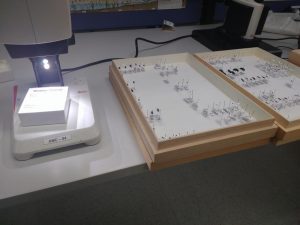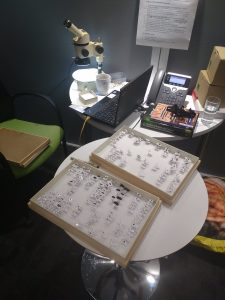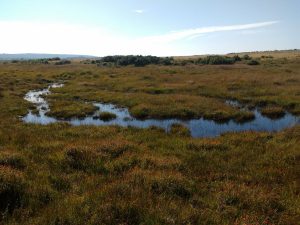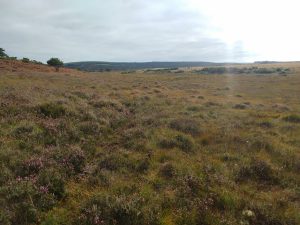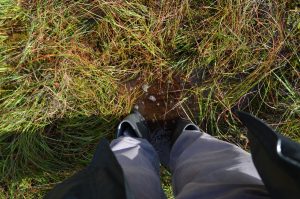
Since my last blog post I have spent the majority of my time really trying to get to grips with the identification of the groups of beetles that I am specialising in. For my work at Woodwalton Fen this means learning how to identify ground beetles (Family: Carabidae) and rove beetles (Staphylinidae), this includes a lot of microscope work as you have to look at intricate features on the beetles in order to identify them, such as hairs on their legs, micro-sculpture on their wing cases etc. In the case of many of the rove beetles, you also have to dissect them in order to identify them to species level. This usually means that you have to have a male and look at his penal structure, the adeagus. Females of many of these groups cannot be identified to species level. I am slowly getting to grips with the identification of these groups and now do not have all that many to check, although some will need to be checked against reference material in a museum.
However my work at Blenheim Palace on Saproxylic (dead wood dependant) beetles includes a larger number of beetle families, each with their own features required to positively identify them to species level. This can make them more tricky to identify. However as I have spent the majority of my time in the last month at a microscope, I have identified a lot of these beetles and just need to confirm some and tackle the more tricky groups such as the click beetles (Family: Elateridae), bark beetles (Family: Curculionidae) and root-eating beetles (Family: Monotomidae). I went to the Natural History Museum in London last week and identified some beetles there using the excellent Angela Marmont Centre . I also picked up some storage boxes which has meant that I can organise my beetles from Blenheim more easily and make comparisons between specimens.
I have also spent 3 days in Dorset helping with some training (whist learning a lot myself!) on wet and dry heathland evaluation. This is work that is carried out to assess the condition of SSSIs and this has an element of assessing whether there are features there that are important for invertebrates. This really was an amazing few days filled with talks, meeting the Natural England Field Unit and visiting sites. One of the best bits was learning how to survey acid mires for invertebrates, some work that I hope to continue at some point as the survey mechanisms are an extension of the work that I have been carrying out on the calcareous fenland at Woodwalton Fen.
This next month or so will consist of:
- Attending a regional CIEEM conference which is looking at balancing ecological and historic interests, including talks on veteran trees
- Attending the Bees, Wasps and Ants Recording Societies conference and AGM in Cardiff
- Attending a course on woodlice, centipede and millipede identification
- Some training on salt marshes – a habitat I know nothing about yet
- Finishing my survey work at Blenheim and Woodwalton Fen
- Lots and lots of ID work
It is going to be another busy month, so why not keep up with my traineeship by following my personal Twitter account and the Natural Talent Twitter account.

